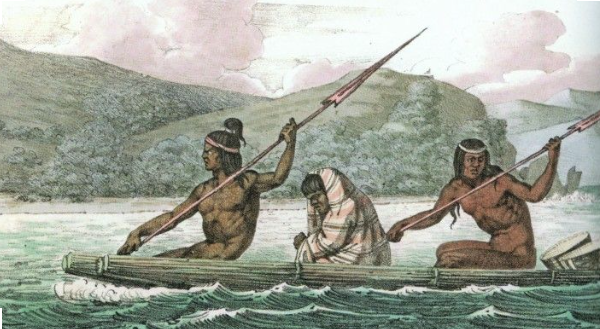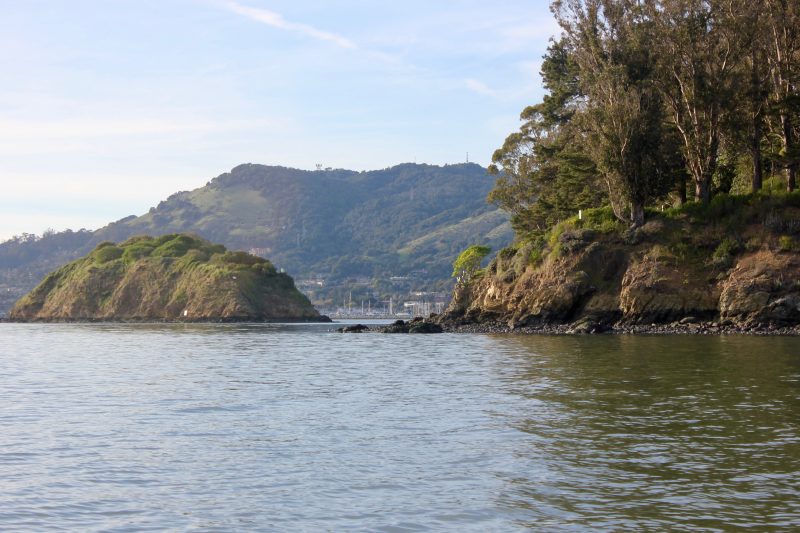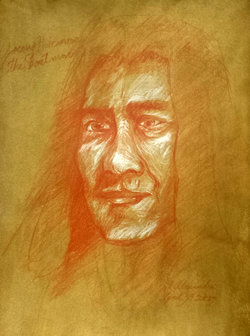
In a Land Named for a Mariner
Today, we’d like to celebrate an ancient mariner who is often credited with ‘discovering’ a great land. He didn’t really discover this land — there were generations of people long before him — but his name carries such weight and import that he become recognized, even synonymous with the place where he lived, navigated the waters, fought, and died.
His name is Chief Marin.
“Chief Marin was a Coast Miwok Indian who lived in the first half of the 19th century, a boatman or mariner valued for his knowledge of the tides who became an official witness at baptisms and weddings at Missions Dolores and San Rafael Arcangel,” wrote the Marin Independent Journal in 2007. “And he struggled with the Spanish military, which twice put him in prison at the Presidio.” The Journal was writing about a new book at the time: Chief Marin: Leader, Rebel, and Legend, a History of Marin County’s Namesake and His People, written by College of Marin anthropology teacher Betty Goerke. We have not yet read the book, and can only find cursory references to Chief Marin’s on-the-water prowess. Goerke said the newly arrived Spanish clergy needed Marin “for his gifts: his ‘leadership ability, intelligence, navigational and maritime skills, knowledge of Spanish and the respect he received from other Indians and the military.'”

We have always found it easy to imagine a time when Chief Marin and the Miwoks lived in the Bay when we’re sailing out of San Rafael, which is quiet and relatively empty compared to the Central Bay. Every time we pass the Marin Islands (as we did this weekend), we can’t help but think what life was like 150 years ago before the traffic, buildings, powerboats and Blue Angels. Even on a ‘busy’ holiday weekend — with nearly 10 boats anchored at China Camp — the shores of San Pablo and San Rafael bay feel placid, ancient and permanently frozen in time. The drone of freeways rimming the Bay is noticeable, but not un-symbiotic with the lapping of the waves and echoes of birds. Even the occasional guttural roar from a flock of F/A-18 Hornets can fit the mood.

Of course, these are all just narratives we like to tell ourselves. As with many Native American legends, details are sparse because the stories were generally word of mouth, or have been sculpted by the forces exerted over time by the dominant culture and its version of history.
Along with the Chief Marin narrative regarding the county’s namesake, Marin Magazine suggested another hypothesis in a 2018 article: “Going back centuries, several minor saints were dubbed Marius, implying ‘of the sea’. Over time, Marius became a Roman family name. As the years passed, the Italian derivative Marino emerged as did Marin, the Spanish adaptation. One possibly valid genesis for the name Marin took place in 1775, when Spanish naval lieutenant Juan Manuel Ayala became the first European to enter San Francisco Bay. While spending 40 days charting the Bay’s surroundings, Lt. Ayala named the inlet between what is now Marin’s San Pedro Point and Point San Quentin Bahia de Nuestra Señora del Rosario la Marinera, meaning Bay of Our Lady of the Rosary, the Mariner. Many assume that Marin became an abbreviation of that rather lengthy nomenclature.”

Marin Magazine acknowledged the Chief Marin legend, but was confounded by the myriad namesake possibilities. “Many historians claim [Chief Marin’s] nickname was El Marinero, which alludes to Ayala’s 1775 naming of a Bay in what is now Marin County. So which came first? Obviously, the Bay did. Adding to the confusion, the name Marin is of Latin or Spanish origin, hardly part of the Coastal Miwok Indian lexicon, a tribe to which the chief supposedly belonged. Would any Indian chief, real or supposed, allow that to occur?”
History has been and remains in the eye of the beholder.
